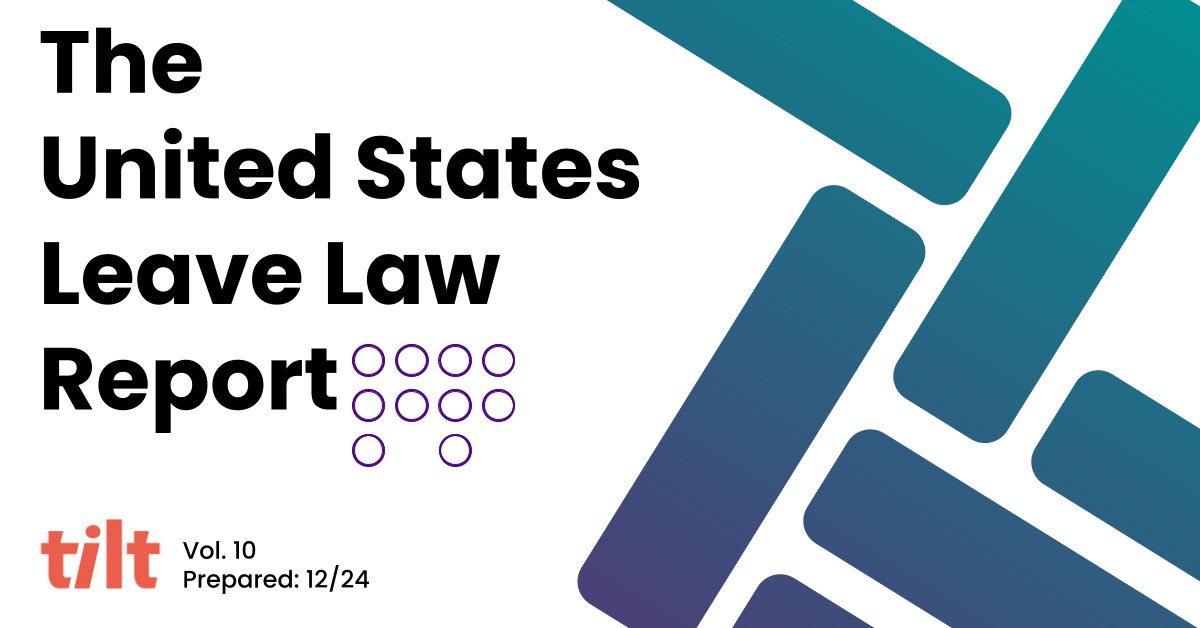The date was February 5, 1993. Whitney Houston’s “I will always love you,” was # 1, Apple stock was $0.42 a share, and the concept of a “remote workforce” only made sense in reference to television factories. It was also the day that the Family and Medical Leave Act (FMLA) was enacted, requiring covered employers to provide employees with job-protected, unpaid leave for qualified medical and family reasons.
Given that working from home in 1993 was most certainly the exception and not the rule, the language in the FMLA did not take into account a world in which remote work was commonplace like it is today. So does remote work impact FMLA eligibility? It can if you aren’t careful.
The FMLA Basics
The FMLA requires that certain private employers provide eligible employees with up to 12 weeks of unpaid leave from work to take care of their own serious health condition or a family member’s serious health condition.
An employer is required to provide FMLA to eligible employees if it employs 50 or more employees in 20 or more workweeks in the current or previous calendar year. An eligible employee is one who meets all of the following conditions:
- Is employed for at least 12 months
- Has been employed for at least 1,250 hours during the 12 months immediately preceding the start of the leave
- Is employed at a worksite where 50 or more employees are employed by the employer within 75 miles of that worksite.
The crux of the issue as it pertains to FMLA eligibility and remote workers revolves around this concept of a work site and the 50/75 rule (50 employees within a 75-mile radius). While many employers waive the 75-mile rule, especially if they have remote workers, some employers are more strict with the rule’s application, which comes with potential risks.
Why Do Employers Typically Waive the 50/75 Rule?
Denying FMLA eligibility for your remote employees because they aren’t technically working within 75 miles of an office can be a risky proposition. Some employers will try to claim they’re going by the letter of the law, but since the FMLA wasn’t written with today’s remote workforce in mind, the letter of the law can be quite blurry. To help your organization mitigate compliance risks, and to best support your people, let’s bring the issue into focus by outlining why organizations often waive the 50/75 rule:
If your company has 50+ employees total, it’s possible that your remote workers already satisfy the 50/75 requirement.
- The FMLA regs specify that an employee’s personal residence should not be considered their worksite. Instead, a remote employee’s worksite is the “office to which they report and from which assignments are made.”
- If your company has an office of any sort, that office could very well be considered a “worksite” for your remote employees, in which case your employees would satisfy the 50/75 requirement, even if they lived several states away.
- If your company has no office whatsoever, it’s risky to assume that FMLA doesn’t apply in that case, as this isn’t something that has been decided by any court.
It can be a lot of work, and invite compliance risk, to enforce the 50/75 rule.
- In order to apply the 50/75 rule, your organization will need to continually monitor which employees meet the requirement, and which don’t.
- If you’re not 100% confident about being able to identify all of your FMLA worksites and track the employee populations within 75 miles of those worksites (and/or the remote employees that are associated with those worksites) as they change, then you’ll be at risk of making incorrect FMLA eligibility decisions.
HR professionals can be personally liable for incorrect FMLA eligibility decisions.
- Courts have ruled that managers and HR personnel can be sued as individuals for FMLA violations. An example of this is Graziadio v. Culinary Institute of America, where the Second Circuit Court held that a, “Director of Human Resources may be individually liable for violations of the FMLA based on the level of control the individual had over an employee’s exercise of rights under the FMLA.”
- We’ve yet to come across any FMLA lawsuits that have been brought because an HR team was generous in its interpretation of an unclear FMLA requirement.
The California Family Rights Act (CFRA) doesn’t have the same 50/75 requirement that FMLA does.
- If you have employees in California who have been employed for one year, and 1250 hours in the prior year, they will be eligible for up to 12 weeks of leave under CFRA even though they may be ineligible for FMLA based on the 50/75 rule.
- Some employers have decided that it makes sense to waive the 50/75 rule to drain FMLA concurrently with CFRA–otherwise, an employee could have 12 weeks of CFRA leave and then potentially 12 additional weeks of FMLA leave right after that if there are changes in worksites or employee populations that impact the 50/75 rule.
The original reason for considering a 75-mile radius doesn’t translate well to remote workforces.
- When the FMLA was passed nearly 30 years ago (1993 wasn’t that long ago…was it?), lawmakers had concerns about the impact of leave on smaller teams that would find it difficult to absorb extra work. (If you had only three employees in a Sacramento office doing specialized work, and one went on leave in a world before remote work, that sometimes made life very difficult for the remaining two.)
- However, with a remote workforce, employers can often spread out work across a broader team–not just the two employees left physically working in Sacramento–to lessen the impact of an employee on leave.
It might just be the right thing to do.
- An employee that needs time off for their own medical condition or to bond with a new child has a lot going on already. Worrying about whether their job will still be there after a few weeks will only add stress to their lives.
- If employees associated with some worksites (or in California) can take FMLA and/or CFRA leave, think about the impact on employee morale when employees in the same organization with the same tenure are told they can’t have time off when they need it for similar reasons.
A Case Study in Strictness
Your organization might have reasons for attempting to strictly apply the 50/75 rule for your remote employees. So let’s take a look at a case in Texas where doing so led to an employee suing their employer over FMLA eligibility.
In Landgrave v. Fortec Medical Inc., a remote employee sued her former employer, Fortec, alleging that it failed to provide her leave under the FMLA after concluding that she was not eligible because the company did not have 50 employees within a 75-mile radius in Texas.
In this case, Landgrave argued that her worksite was the company headquarters in Ohio. Fortec argued that Landgrave’s worksite was in Texas, because that’s where Landgrave’s supervisor worked. The court denied Fortec’s motion for summary judgment, stating that the location of the worksite was an issue of fact for a jury to decide. Before that could happen, the parties settled confidentially out of court, but not before the employer had to pay for an expensive legal defense.
Would this situation have come about if the employer had been more lenient with its interpretation of the 50/75 rule for its remote worker? The bottom line is it’s up to the employer’s discretion on how to apply this rule, but the risks associated with being strict aren’t insignificant and need to be taken into consideration when making that decision.
Had Fortec been more lenient and not denied Landgrave FMLA eligibility over remote status, Landgrave would have been given access to job-protected leave, felt more supported by her employer, and there would have been no reason for legal recourse.
About Tilt
Tilt is leading the charge in all things leave of absence management through easy-to-use tech and human touch. Since 2017, our proprietary platform and Empathy Warriors have been helping customers make leave not suck by eliminating administrative burdens, keeping companies compliant, and providing a truly positive and supportive leave of absence experience for their people.







